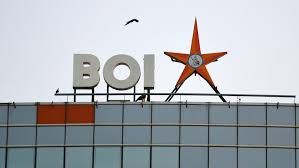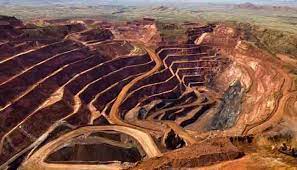Beijing January 17 2025: China’s economy hit the government’s growth goal last year after an 11th hour stimulus blitz and export boom turbocharged activity, although looming US tariffs threaten to take away a key driver of expansion.
Gross domestic product rose 5% in the world’s second-largest economy, data released by the National Bureau of Statistics on Friday showed, slightly exceeding the median estimate of 4.9% in a Bloomberg survey. President Xi Jinping said on New Year’s Eve the country was expected to meet the goal of around 5%.
“The biggest bright spot in the economy last year was exports, which was very strong especially if price factor was excluded,” Jacqueline Rong, chief China economist at BNP Paribas SA. “That means the biggest problem this year will be US tariffs.”
China has vowed further monetary easing and stronger public spending this year, as the economy braces for Donald Trump’s return to the White House. The US president-elect has threatened tariffs of as high as 60% on Chinese goods that could decimate trade with the Asian country.
Those very threats encouraged global businesses to frontload shipments and bolstered growth last year. But that boost may fade in the coming months as potential levies, including from the EU and other trade partners, make Chinese exports less competitive.
The yuan strengthened 0.1% against the dollar in both the onshore and offshore markets after the data release. The benchmark CSI 300 index of Chinese stocks erased an earlier loss of 0.5% to rise 0.5%.
While China’s nearly flawless record in reaching its headline growth target is frequently doubted, the broad set of data also suggests Beijing’s policy pivot since late September helped counter headwinds from a years-long property slump and entrenched deflation.
Industrial production beat estimates to rise 6.2% in December compared to the previous year, the fastest pace since April.
The picture for domestic demand is more mixed. While unemployment climbed for the first time since August and property sales continued to contract, consumption showed signs of uptick in categories helped by the stimulus push.
Retail sales rose 3.8% in the last quarter, accelerating to the fastest pace in 2024 after the government ramped up a program to subsidize purchases of appliances, cars and business equipment. That brought home goods sales growth to 12.3%, the highest since 2013.
“Front-loaded export orders certainly helped, but the improvement was not just seen in exports but also consumption, which was largely a result of purchase subsidies,” said Larry Hu, head of China economics at Macquarie Group Ltd.
Economists led by Robin Xing at Morgan Stanley estimate that about 60% of the rebound in annual growth was caused by China’s policy to boost consumption and manufacturing investment, while the rest came from advanced shipments.
The signs of improvement bode well for the trade-in program, which authorities have vowed to expand this year as they seek to make boosting consumption a top priority.
The economy grew 5.4% in October-December from the same period a year earlier, the fastest pace in six quarters and better than economists’ median forecast of 5%. The pickup was more pronounced on a quarterly basis, with the growth of 1.6% the highest since March 2023.
China’s trade surplus soared to a record last year, a boon to the economy that may be threatened not just by Trump’s tariffs but a growing number of countries complaining of a flood of cheap Chinese goods. Falling prices also mean exporters are earning less for their products as the volume of Chinese trade outpaced value.
China’s nominal GDP growth, which is unadjusted for falling prices across the economy, expanded 4.2% in 2024, based on Bloomberg calculation of official data. That’s the slowest pace since 2020 and reflects the impact of persistent deflation, which has lasted for the second straight year.
The economy was “overall stable and progressed with stability” in 2024, the NBS said in a statement. “But we also need to see that the negative impact from changing external environment is deepening, domestic demand is insufficient, some companies are facing difficulties with production and operation, and the economy still faces plenty of difficulties and challenges,” it added.











